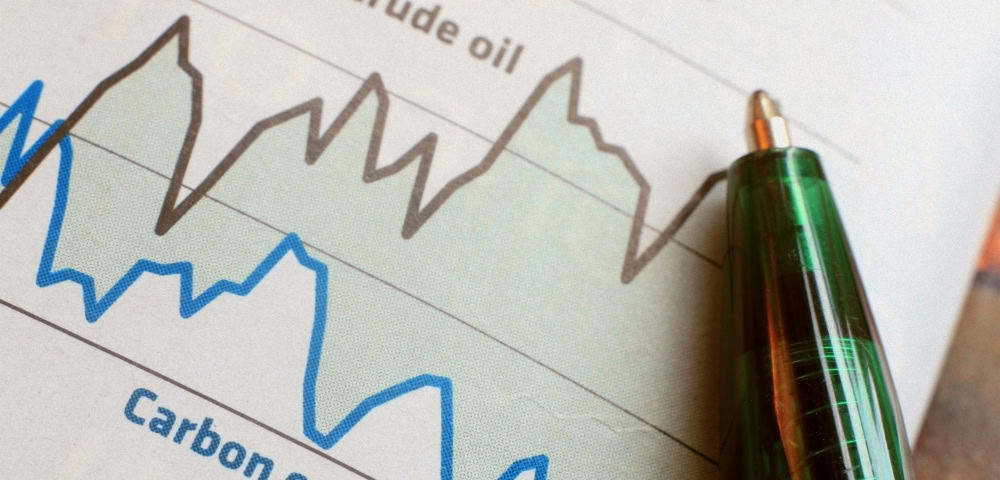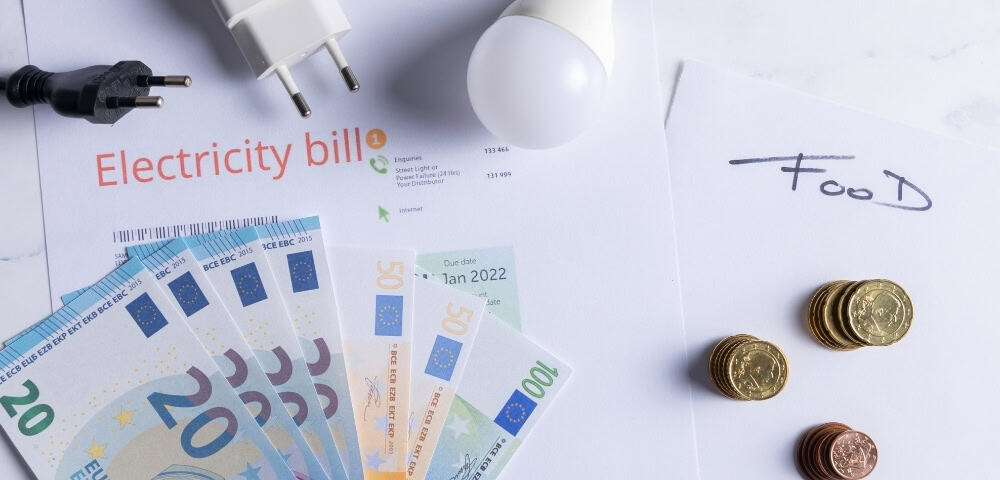Oil prices just soared around 20% in two weeks, and experts warn this is only the beginning! As we all can see, the Israel-Iran conflict has shaken global energy markets, sending shockwaves through supply chains and operational budgets worldwide. For businesses already struggling with rising costs, unfortunately, this new volatility adds dangerous pressure to profit margins and cash flow. Every shipment, utility bill, and production cycle now comes with uncertainty. If you want to protect your business from these unpredictable surges, you need a plan now.
In this article, we reveal six powerful, practical strategies any business can use to protect their budget, stay agile, and navigate the financial fallout of this unfolding energy crisis.
We will reveal
Why the Israel-Iran Conflict Is Sending Shockwaves Through Energy Markets?

- The main reason for this is that both countries influence vital routes and supply sources tied to oil and LNG.
- When tensions rise in the Middle East, traders and governments react fast, and this eventually causes oil prices to spike and energy derivatives to swing unpredictably. Tanker routes in the Strait of Hormuz face threats, which raise insurance rates, delay shipments, and increase fuel transportation costs.
- On the other hand, LNG exports get redirected, and some deliveries face rerouting, which pushes prices even higher. The worst fact is that these changes do not stay regional. Instead, they hit wallets worldwide.
- Businesses everywhere feel the heat as fuel costs climb, supply chains slow down, and inflation spreads like wildfire into goods, services, and logistics. As energy becomes more expensive, even small spending mistakes drain budgets.
- That is why companies need to act now and build financial resilience before the market spirals again. If businesses wait, they risk paying double later.
6 Powerful Strategies to Shield Your Budget

Lock in Energy Prices with Hedging Contracts
In the smart business landscape, they do not leave energy costs to chance when war disrupts oil routes. They use hedging contracts to lock in prices before the market goes wild. This strategy fixes your energy expenses for a set period, so even if oil jumps tomorrow, your rates stay stable.
It works like insurance. This means you pay a bit now to avoid paying way more later. Large manufacturers, airlines, and even small logistics firms use it to stay one step ahead. As energy gets scarcer, locking rates today might save your budget from bursting tomorrow.
Diversify Your Energy Supply Chains
Relying on one region for energy makes your business shaky when conflict hits. If you spread your energy sources across different suppliers or countries, you dodge the worst surprises.
It is advised to add in some renewables, mix in regional vendors, and reduce your dependence on oil from unstable areas. This way, if one supply stops or prices rise, others can fill the gap. Even small businesses can look into energy aggregators or flexible contracts.
Invest in Renewable Energy and Onsite Generation
When oil prices swing up and down, depending on the grid, it feels risky. Businesses that install solar panels, wind turbines, or battery backups can keep the lights on and bills low, even during global chaos. These systems cut long-term energy costs and give you control.
This way, you do not need to go fully off-grid; just powering key operations with clean energy can cushion price jumps. Some companies even sell back excess energy for extra cash. So instead of watching fuel prices climb, start generating power on-site.
Improve Energy Efficiency Across Operations
Every wasted watt burns money, especially when conflict drives energy costs sky-high. Fixing that starts with smarter systems, like switching to LED lighting, tuning HVAC units, and upgrading old machines.
You do not need a massive budget to make changes that save thousands over time. Even better, tracking energy use helps teams spot leaks or problems fast. Many tools now show real-time data so managers can make quick decisions. The less power you waste, the fewer surprises hit your budget.
Build Financial Buffers and Scenario-Based Budgets
When prices bounce wildly, having extra cash set aside keeps your business steady. That is where financial buffers come in. Set aside a part of your profits every month and use it as your shock absorber. Pair that with scenario-based budgeting, where you map out possible changes, like sudden oil hikes or shipping delays, and plan how to respond.
This approach helps you stay calm when markets act unpredictably.
Make Use of Government Incentives and Emergency Subsidies
When wars cause energy prices to surge, governments normally step in with help. This is where many offer tax credits for clean energy, rebates for equipment upgrades, or short-term relief funds for rising utility costs.
However, these programmes change fast, and not everyone knows they exist. A good financial assistant platform or consultant can help spot and apply for the right support. Whether you are a bakery or a factory, taking advantage of available aid can ease pressure on your budget.
How Can Technology Help with This?

Real-Time Energy Cost Tracking and Forecasting
Energy prices do not keep waiting in the same spot for a longer period, and neither should your business. If you occupy some robust real-time tracking tools, they will show you the exact moment your energy costs rise, drop, or spike. These platforms track bills, usage, and cost fluctuations as they happen, helping you avoid nasty surprises.
Forecasting tools also look ahead, predicting trends based on market data. This combo gives you a live map of where your money is going and what could hit next. Whether you run a cafe or a global supply chain, knowing your energy costs in real time gives you a heads-up for the worst situation.
Predictive Cost Forecasting
Now that the technology has become massively advanced, it does not just look at the past. It has the ability to read the future, too. This is where the predictive cost forecasting tools crunch numbers from your usage history, current prices, and global energy news to guess what is coming next.
You can spot a cost wave before it crashes into your budget. These forecasts help you make smarter purchase decisions, lock in better rates, or slow down high-energy operations just in time. Even if you run a small business, these tools give you insights that used to belong only to big corporations. Predicting the next move helps you keep your money in check all the time.
Automated Budget Alerts
No one likes opening their budget report and seeing numbers that do not add up. This is when automated alerts solve that. These tools keep an eye on your spending 24/7 and send instant notifications when you go over your planned limits.
Whether energy prices skyrocket or a delivery gets delayed, you will know the moment it hits your budget. You can set custom thresholds so you are not overwhelmed with extra numbers. This kind of smart tech acts like a watchful assistant that never sleeps. Even while you are sleeping, your smart tools keep working.
Scenario-Based Budget Planning
When war, energy hikes, or supply chain issues pop up, the worst thing to do is to proceed without accurate data. Scenario-based planning tools help you build flexible budgets that adjust to real-world changes. You can test ‘what if’ situations, like if oil jumps 20% or if a shipment gets delayed by a week, and see how it affects your finances.
That gives you time to shift your spending, move funds, or pause non-urgent work. Whether you are a retailer, manufacturer, or service provider, planning with possibilities helps you stay calm when things get messy.
Centralised Financial Dashboard
When you incorporate smart technologies into your business operations, you no longer have to juggle between emails and reports. A centralised financial dashboard puts everything you need in one place. It shows your expenses, savings, cash flow, and real-time energy usage all in one clean view. You do not have to bounce between apps or dig through folders.
Further, this setup saves time and reduces human error, especially when things get unpredictable. It also helps team leaders and finance staff work with the same data, so everyone stays aligned. Whether you run a growing startup or a multi-location business, having one screen that tells your full money story changes the game.
Integration with Fuel and Energy Price Feeds
By your years of experience in this landscape, you know that energy markets shift fast, especially when global conflict messes with supply. If your system connects to live energy price feeds, you will get up-to-the-minute data that helps you make faster decisions.
This means that you will know when to slow down production, shift delivery times, or even call suppliers to renegotiate costs. These integrations help your financial tools stay current with the real world. Therefore, instead of reacting late, you have the capacity to plan with confidence.
Incorporate Next-Gen Tools to Save Your Budget from Unexpected Scenarios

Today, tomorrow, or in another year, the next surprise is coming. That is certain, and the uncertain fact is that you just do not know when. However, your tools can. Whether it is war, supply delays, or price spikes, if you have employed next-gen Financial Assistant Platforms, they do not flinch. They respond fast, adjust smarter, and keep your budget breathing. However, it is always better to have a demo before purchasing them.

